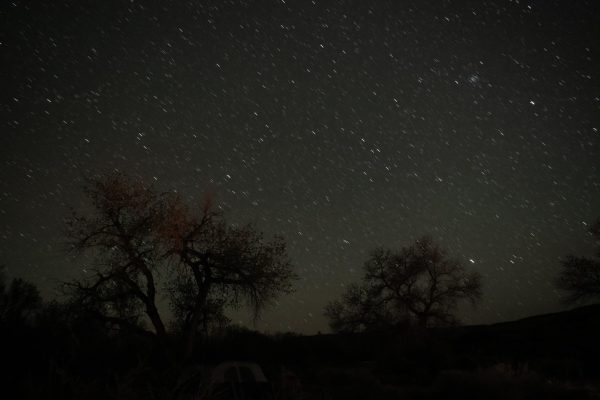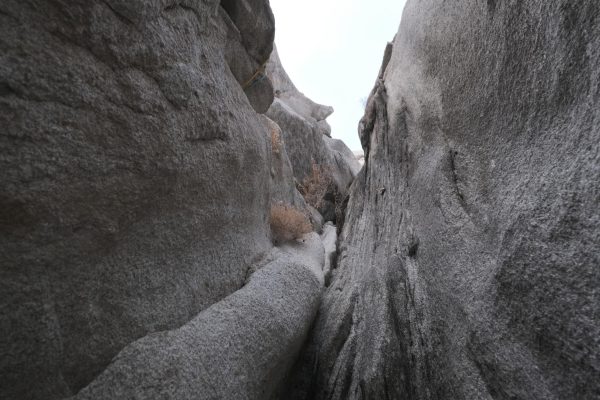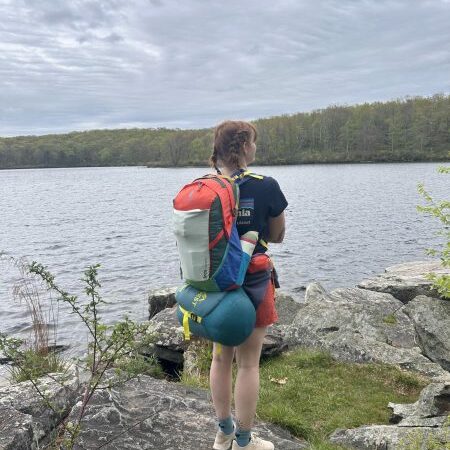Observations of a Storm, High Up on a Ledge
First the rain comes down. Lightly at first, and then as the sky opens up, a full deluge. The sandy earth, reaching a point of saturation that it can no longer contain, starts to sweat out excess water. Puddles collect on impermeable sandstone, before they too begin to overflow.
Water flows down to collect at low points in the landscape. Overhanging rocks spill water down onto the levels below, and to levels below that. Drips form trickles. Trickles become rivulets, and rivulets form into small streams. At each coalescence, the flow gains energy and volume, rushing towards the eventual end of its journey: a plummet to the valley floor a good thousand feet below.
Some of the smaller streams coalesce into larger and larger streams, while others take advantage of cracks within the rock and disappear. Larger streams roar down the washes, transporting sediment along the way. No matter the journey the stormwater takes along the ground, the end of the journey is as quick as its beginning. As suddenly as it has fallen from the sky, it is ejected violently back into the air out over the precipice. Left to fall and recollect, eventually it finds a way to the Green River in the canyon below. Meanwhile, I’m standing soaked to the bone, in fear and awe watching the forces of nature wreak havoc on the landscape around me. That is what it is like to watch a storm along the edge of a cliff in the Utah desert.
As dramatic as that sounds, truthfully, it is not that much fun to be around.
For a flash flood to happen, there are some pretty miserable conditions that come well beforehand the actual flood. To start with, at least in my recent experience, you need consistent rain to saturate the landscape. After that, heavy rain is needed to completely overtop the system and feed immediate, energetic, and dramatic flooding.
If you are out camping in all that rain, well, good luck.
I was lucky enough to be part of a crew that was out high-lining over Moab’s Fruit Bowl over the St Patrick’s day weekend. After camping out in a particularly soggy tent, and struggling to stay dry for most of the morning. Our group took advantage of a break in the rain to make our way down to the bowl to hang out and make the most of fair weather.
A popular high-lining area, the Fruit Bowl is a particularly striking specimen of a box canyon not far from Moab. Being particularly exposed with incredibly steep and narrow walls, it makes for a very scenic and dramatic place to hang out.
That is until the rain started up again. When the rain starts pouring, this is a very interesting, if not alarming place to be.
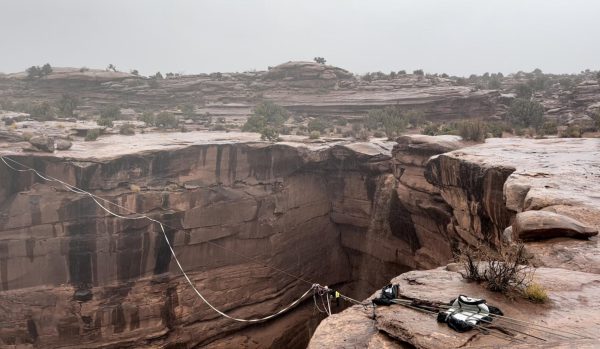
Box canyons are formed by erosion. As water falls over the edge of a cliff, it cuts upward, eroding the underlying rock and softening the chemical bonds that hold sandstone together. Eventually sections of rock will fall away, deepening the canyon.
While some smaller streams near the edge empty over the precipice rather immediately, it is the mouths of large washes and drainages emptying into box canyons where one must pay attention. That is where the larger volumes of water coalesce and are carried the distance from deeper in the plateau.
When the rain started, I didn’t know what to expect. However I was not prepared for the speed at which everything occurred. It had to have been minutes after the first raindrops fell before everything started flowing. Seeing the surface of the desert surging with innumerable streams all rushing towards the edge of the same precipice, I find it’s hard to picture the speeds at which everything happens. The process is so fast, it is difficult to comprehend the volume of water that appears out of thin air before it’s gone, carried out over the edge with terrific energy and violence. Watching a flash flood fly over a cliff is remarkable. It starts with a low gurgle, then a drip of mud starts coming over the edge. In the distance is an audible roar, and before you know what is happening a violent torrent of water is shooting out into space.
It was quick, and my jaw was on the floor. Unfortunately, I didn’t record much of this. I was running to get my gear and get out of there.
In this experience, it was not the floods, the force of water or the red mud which stuck to everything that was eye opening. It was how the desert responded to the sudden moisture. Storms are a force for transformation and they enable the desert plants to come to life. This arid landscape which normally sits red, dry, dusty, and barren was suddenly covered in a lush gray green as vegetation took a drink and activated. Not only did rooted plants wake up, but the microorganisms in the soils along with the mosses and lichens came to life.
In my eyes these were the most remarkable. After hiking along the edge of the plateau I discovered some colonies of moss hanging out along the very edge of one of the cliffs. One group had anchored into an horizontal crack in the rock, and appeared to be as happy as moss could be in the cool saturated air rising up the side of the canyon. It was not something I expected to see thriving where it was. It makes me wonder if there is more to the edges of high desert plateaus than meets the eye.
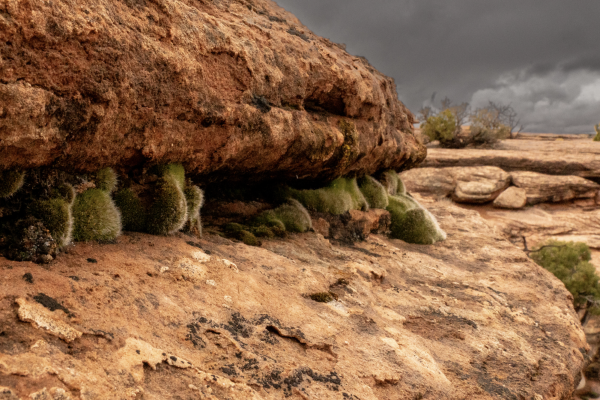
The post Observations of a Storm, High Up on a Ledge appeared first on Wasatch Magazine.
Source: https://wasatchmag.com/observations-of-a-storm-high-up-on-a-ledge/

